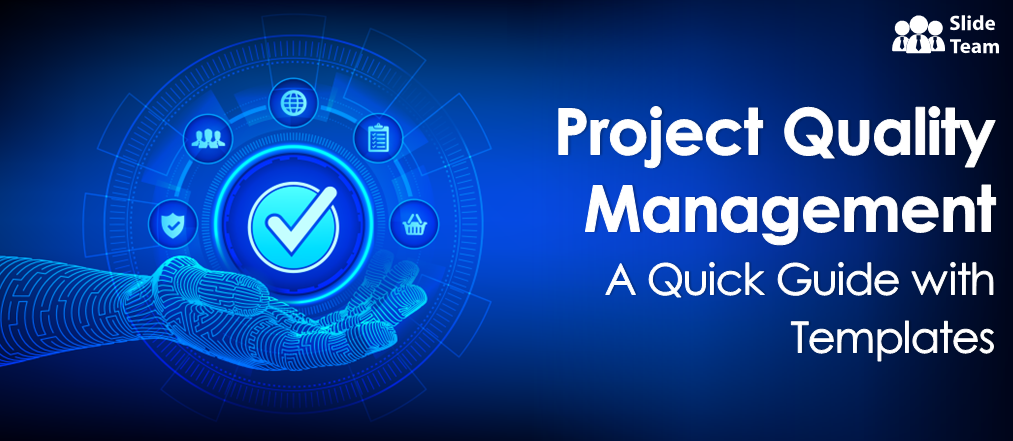Kidlin’s law, one of the top five unavoidable philosophies of life, says, “If you can write down the problem clearly, then the issue is half solved.” In project management, this law is meant to be followed literally, as imagine resolving half of your worrying headaches by just writing the issues down!
Excellent project managers, however, fight the battle thrice. First, in their mind or visualization, easy but ever-going throughout the project. Then on paper or planning, that makes the difference between the success and failure of a project. And finally, when it comes to the execution of the project itself.
The result of the second battle is a project implementation plan, an important document you shouldn’t miss studying before starting the next project.
How Important a Project Implementation Plan Is
A project implementation plan is a comprehensive document that outlines steps, processes, and resources needed to bring a project to life. It serves as a roadmap that guides participants toward achieving their goals and objectives. A well-defined project implementation plan increases the chances of project completion within time and budget by over 350% (2.5 times) than those without one.
Research has shown that 7 of ten projects fail due to poor planning and execution. In fact, according to the Project Management Institute (PMI), organizations waste an average of $97 million for every $1 billion invested in projects. This is because only five of ten organizations have a standardized approach to project management. As you will have guessed by now, better project management starts with a well-crafted project implementation plan.
Project Implementation Plan Templates
Writing a clear and comprehensive implementation plan is a small leap to cover the bridge between project planning and execution. Writing the project implementation plan is nothing less than a small project in itself, especially for complex and lengthy projects.
Visualizing everything from beginning to end, writing down every detail from the action plan to best practices and resources to budget, indeed, will be overwhelming. Also, you have to ensure you cover every small sub-project as well. That’s where our pre-designed project implementation plan templates come to the rescue.
Our PPT Slides give you a head start in writing down the implementation plan with research-based elements already part of the plan. The 100% customizable nature of these templates provides you with the desired flexibility to edit your implementation plans and present them afresh every time. The content-ready slides give you the much-needed structure to create a go-to and easy-to-follow project implementation plan.
1. Project Planning Implementation Process Presentation Deck
This presentation deck has 12 high-quality templates that will help you devise a clear implementation process and make your projects successful. It contains PPT Slides on the website design project implementation plan, three-stage models for the BIS project, strategic implementation flowchart, operating project implementation stage gate process, and more. Download it now!
2. Project Implementation Plan Roadmap Presentation Template
Use this PPT Design to devise a detailed project implementation plan highlighting the details of different phases or activities in a roadmap style. It helps users record project planning, development, supporting stages, and key milestones. You will find space to write important dates or make a time scale at the top of this PowerPoint set. Get it now!
3. Product Project Implementation Plan And Timeline PPT Template
This presentation design will be your blueprint for creating and presenting an all-inclusive presentation plan that will keep your team aligned and focused. It divides the product development project into three major stages — planning, development, and marketing. You will be able to mark monthly milestones and critical activities as well as track progress with the help of this research-based PowerPoint Slide. Download it now!
4. Project Implementation Plan Presentation Template
Take advantage of this PowerPoint set to run your next project smoothly with a comprehensive implementation plan. It contains pre-designed sections to write phase names, activity details, start & end dates, and the number of days for each activity completion. You can also use the blank calendar to write critical information or mark the status of activities like complete, ongoing, or on-hold. Grab it today!
5. Project Implementation Plan Gantt Chart Presentation Template
Want to make your next business project a cakewalk? Then this PPT Design is an ideal choice for you. It will help you monitor the daily progress of multiple projects and their implementation plans. You can edit this PowerPoint Slide to its core components like text, color, theme, layout, etc., to meet your project requirements or branding. Download it now!
6. Project Planning Implementation Timeline PPT Template
With this user-friendly presentation design, you will be able to create an easy-to-read implementation plan. It allows you to strategize the four-month project activities in a weekly manner. You can add the activity’s name in the pre-designed section and mark their status with green ticks or red crosses in the calendar. Get it now!
7. Project Implementation Plan Process Presentation Template
A detailed implementation plan helps you stay ahead and manage projects hassle-free without making rushed decisions in real-time. This PPT Slide shows the stages of an implementation plan to help you make a comprehensive one for your next big project. It starts with commencing a project and proceeds further with discovery, design, testing, training, deployment, and ends with support. Grab it today!
Let’s Pace It!
A project implementation plan serves as a roadmap that outlines the steps and processes required to execute a project successfully. It keeps the team aligned, increases efficiency, communication, and effective resource use, and saves projects from risks like scope creep.
Our project implementation plan templates will help you design actionable procedures that keep your project execution on track. These PPT Designs will be your next ideal and pocket-friendly resource for project planning.
Download these project implementation plan templates now and make your project a success story!
FAQs on Project Implementation Plan
1. What are the 4 major components of an implementation plan?
An implementation plan includes the following four major components:
- Goals and Objectives: This component defines the desired outcomes that the plan is designed to achieve. These goals and objectives should be specific, measurable, achievable, relevant, and time-bound (SMART).
- Action Plan: It outlines actions to achieve goals and objectives and includes timelines, responsibilities, and resources required for each activity.
- Monitoring and Evaluation: Here, the project manager establishes a process for monitoring the progress of the implementation plan and evaluating its effectiveness. It includes regular progress reports, performance indicators, and feedback mechanisms.
- Communication Plan: This component outlines the communication strategy for the implementation plan, which includes identifying the target audience, key messages, and communication channels.
2. What are the 4 stages of project implementation?
The four stages of project implementation are:
- Initiation: This involves defining project objectives, identifying stakeholders, determining feasibility, and creating a project charter that outlines the scope, objectives, and key stakeholders of the project.
- Planning: Here, the team develops a detailed project plan that outlines activities, timelines, resources, and budget required to complete the project. It also includes risk assessments, contingency plans, and communication strategies.
- Execution: At this stage project plan rollout into action, its progress is monitored, and necessary adjustments are made. The project team must coordinate activities, manage resources, and communicate regularly with stakeholders to ensure the project delivery is within budget and deadline.
- Closure: This final stage involves completing the project and transferring deliverables to the clients or management. The project team conducts a final evaluation to assess its success, identify lessons learned, and document best practices. The project is closed out by releasing resources, archiving documentation, and concluding the project.
3. What are the 5 P's models of strategy implementation?
The 5 Ps model of strategy implementation is a framework that outlines five critical elements for successfully implementing a strategic plan. These are:
- Plan: This refers to the strategic plan itself, including the objectives, goals, and actions required to achieve desired outcomes. A clear and comprehensive plan is essential for guiding the implementation process.
- People: It is the workforce required to implement the plan. It includes identifying the skills, knowledge, and experience needed for the project team, as well as developing a communication plan to engage and inform stakeholders.
- Processes: This refers to the systems and processes used to execute the plan, including the workflows, procedures, and protocols.
- Products: These refer to the goods or services that will be delivered at the completion of the project or plan. It is important to ensure the goals and objectives of the plan are aligned with the desired products and target audience needs.
- Performance: This refers to the metrics and measures that will be used to evaluate plan success. It includes KPIs and a monitoring and evaluation framework to assess progress and adjust the plan.
4. What are the 4 implementation strategies?
Here are four common implementation strategies:
- Direct Implementation: In this strategy, an organization implements the plan through its internal resources, such as its employees, equipment, and infrastructure.
- Pilot Implementation: This strategy involves testing the plan on a small scale before rolling it out on a larger scale. This approach allows the organization to identify issues or challenges before implementing the plan more broadly. It is used for complex or risky projects.
- Phased Implementation: Here, the plan is implemented in stages or phases. Each phase builds on the previous one, and the organization can assess progress and adjust the plan before moving to the next phase. It is useful for complex projects that require significant resources and time to execute.
- Outsourced Implementation: In this strategy, the organization outsources the implementation of the plan to a third-party service provider. This approach is helpful for an organization that lacks the necessary resources, expertise, or infrastructure to execute the plan. However, it involves additional costs and requires careful relationship management.


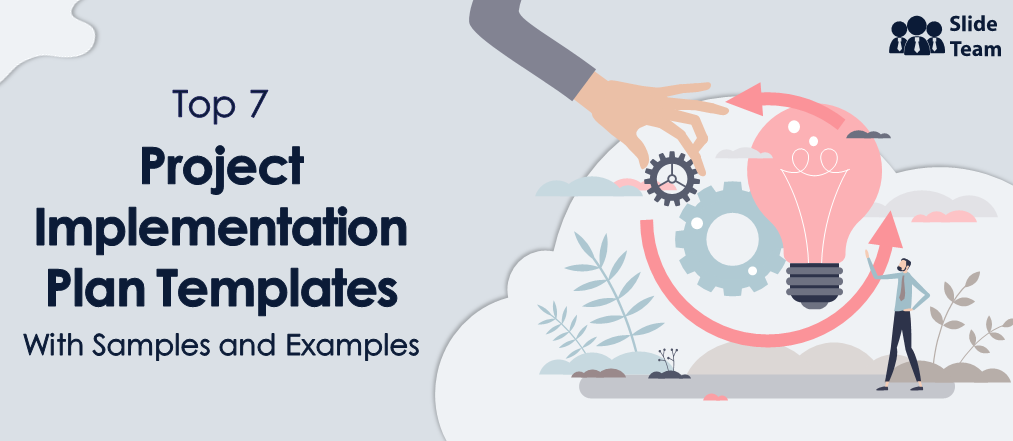


 Customer Reviews
Customer Reviews

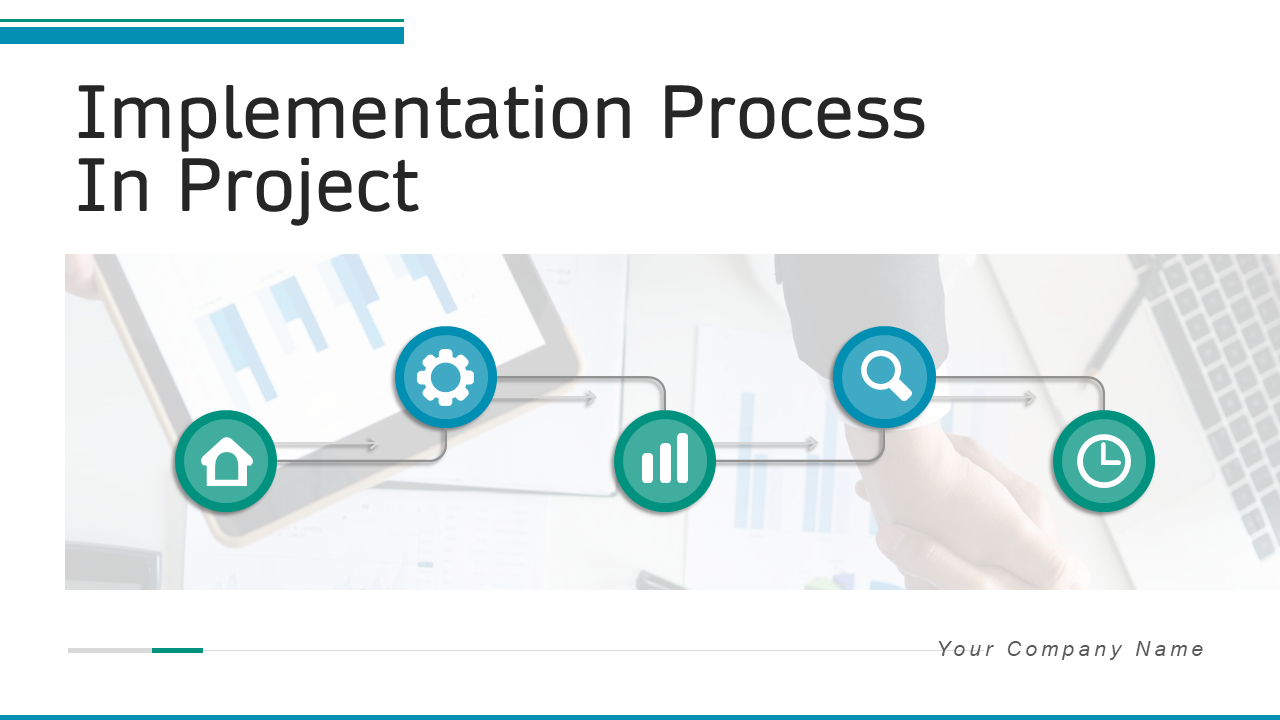
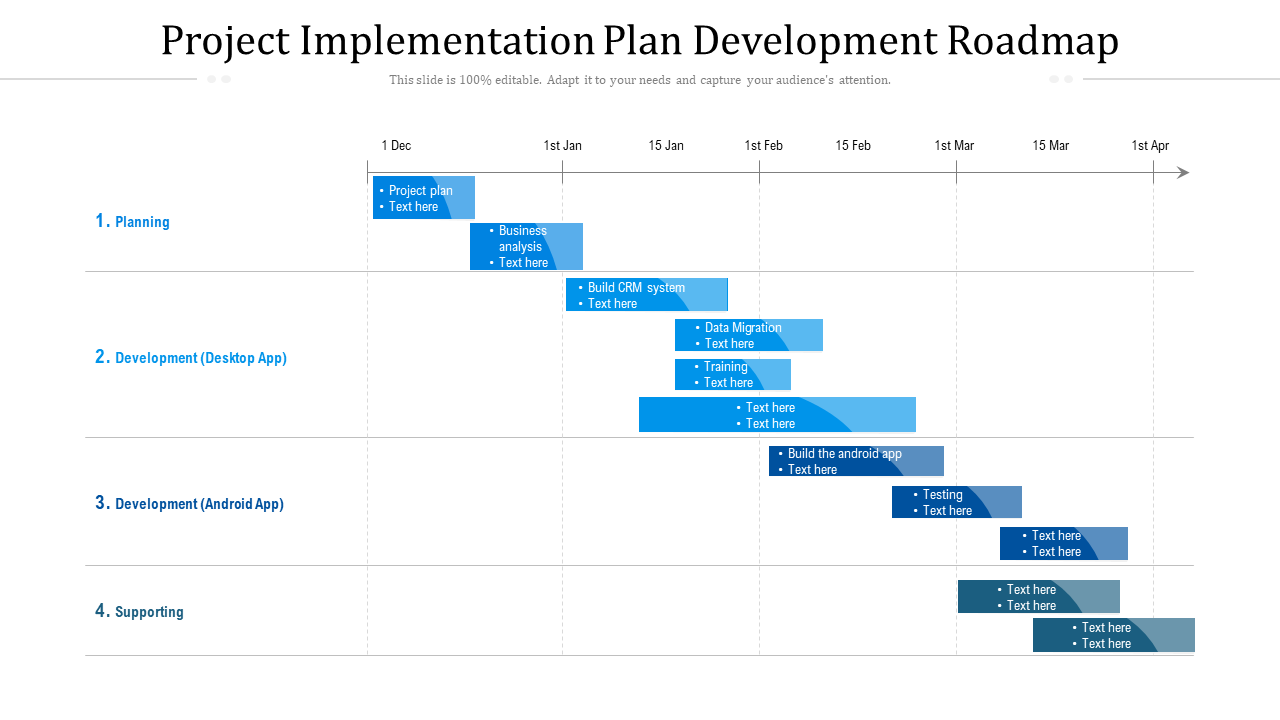
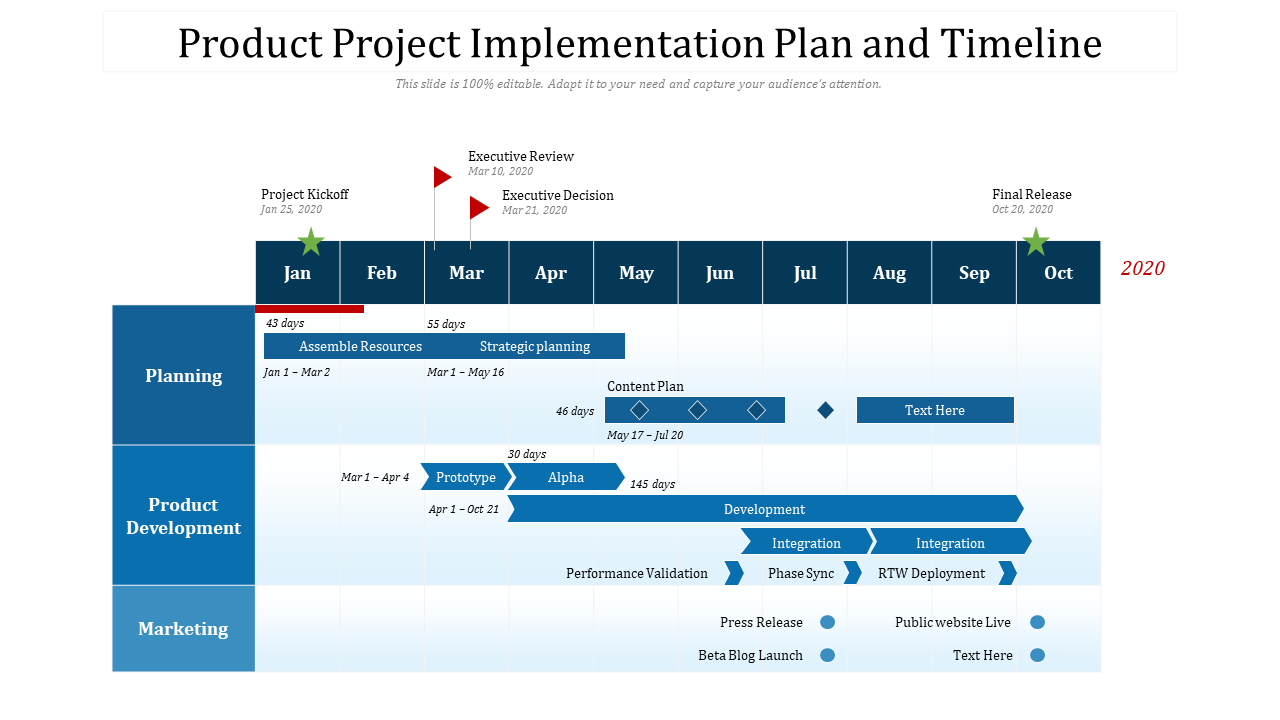
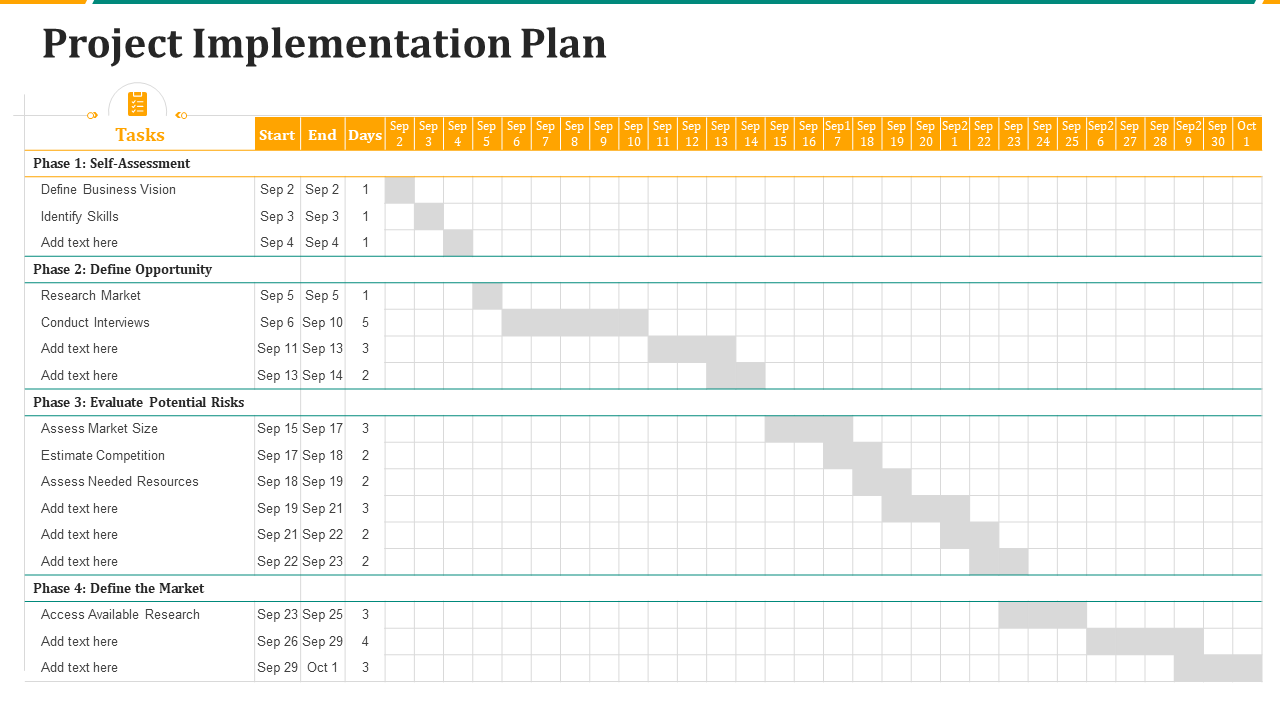
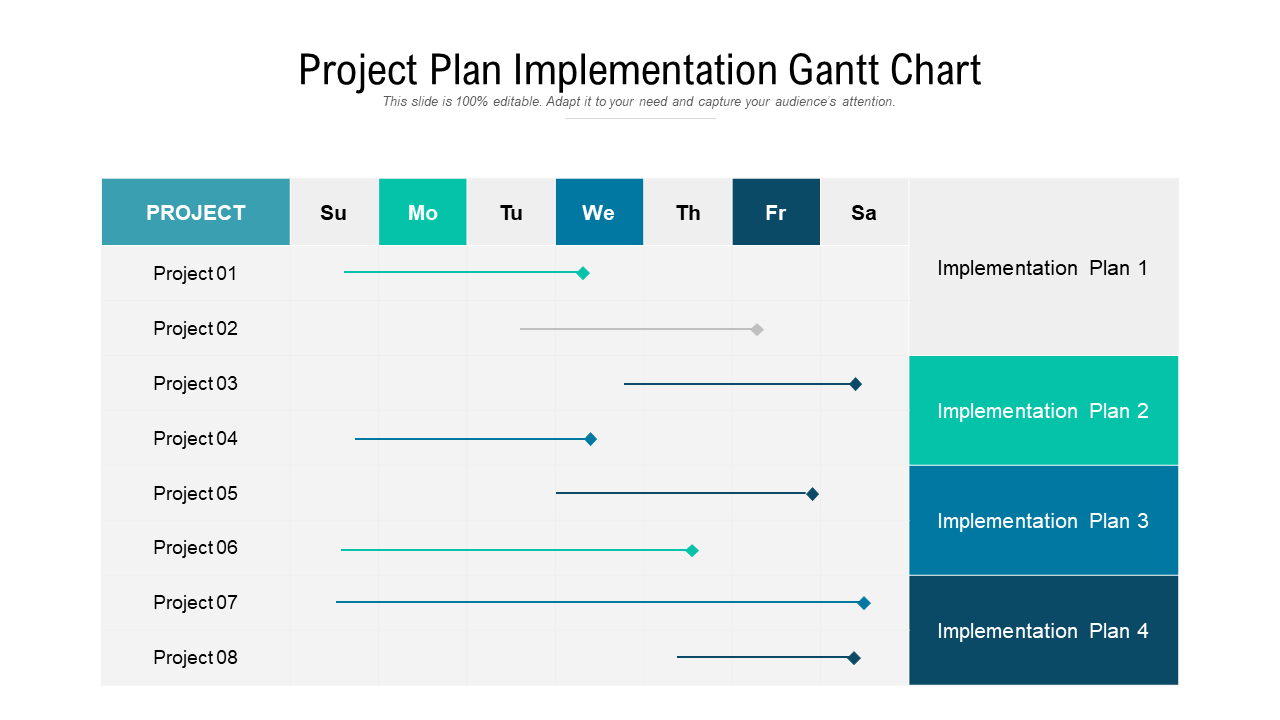
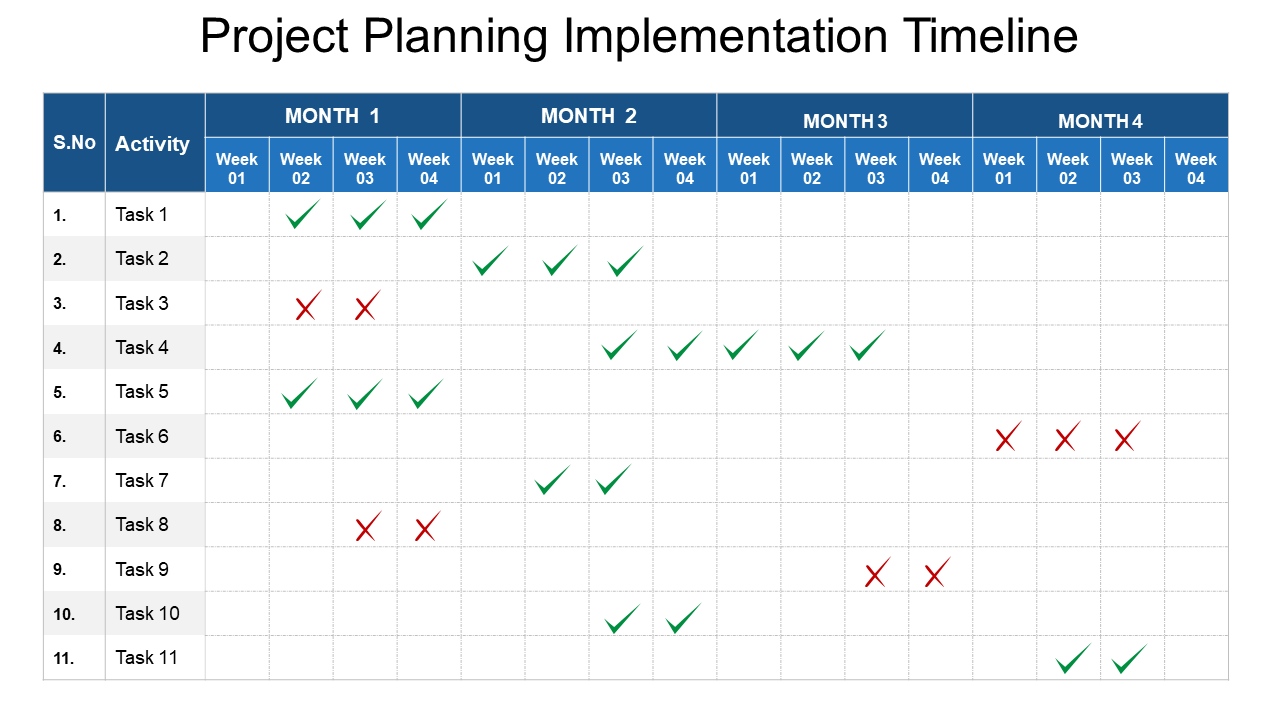
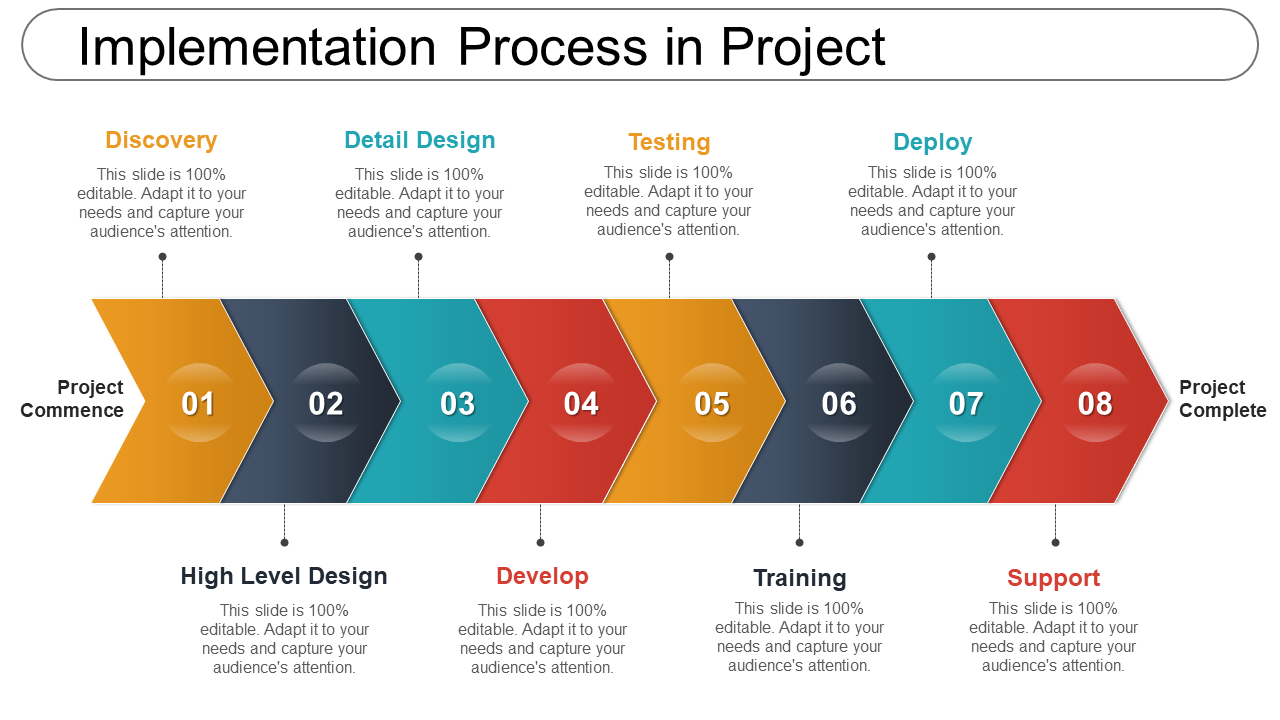




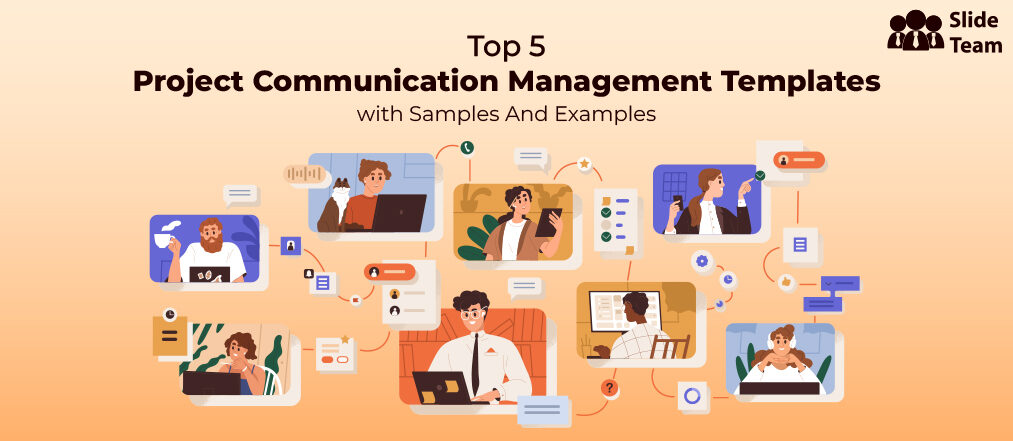


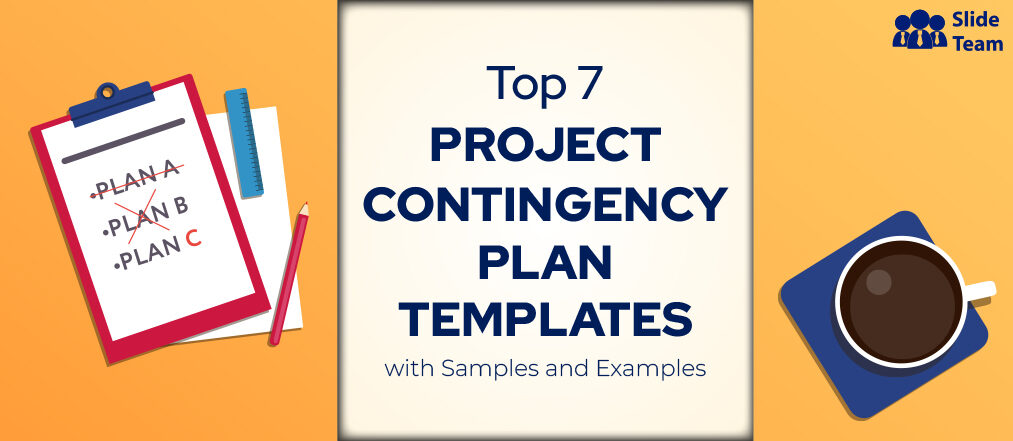

![How to Create a Project Management Checklist: A Step-by-Step Guide [Free PDF and Templates Included]](https://www.slideteam.net/wp/wp-content/uploads/2023/04/Project-Management-Checklist-1013x441.jpg)
